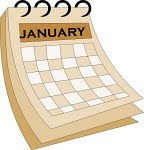Bogotá for Beginners: Ciclovía Sundays
Recently, askmen.com posted its list of the top cyclist friendly cities in the world. Guess what? It wasn't Portland (it took 6th place). Ahead of the only US city to make the list was our very own -- Santa Fé de Bogotá (#3). One of the reasons for this, as cited in the article, is the Ciclovía Sunday. Read more here: http://bogota.vive.in/porlaciudad/bogota/articulos_porlaciudad/enero2010/ARTICULO-WEB-NOTA_INTERIOR_VIVEIN-7032628.html What is Ciclovía Sunday, you ask? Well, on Sundays many of the big thoroughfares of Colombia are closed to traffic so that Bogotá’s citizens can walk, bike and enjoy the city free of traffic pressures. The streets are manned by Bogotá City Police who keep pedestrians and cyclers safe from traffic. I think this is a wonderful public service. Feel free to check out the video below to learn more! Lessons from bogotá Video - Watch more Videos at Vodpod.










